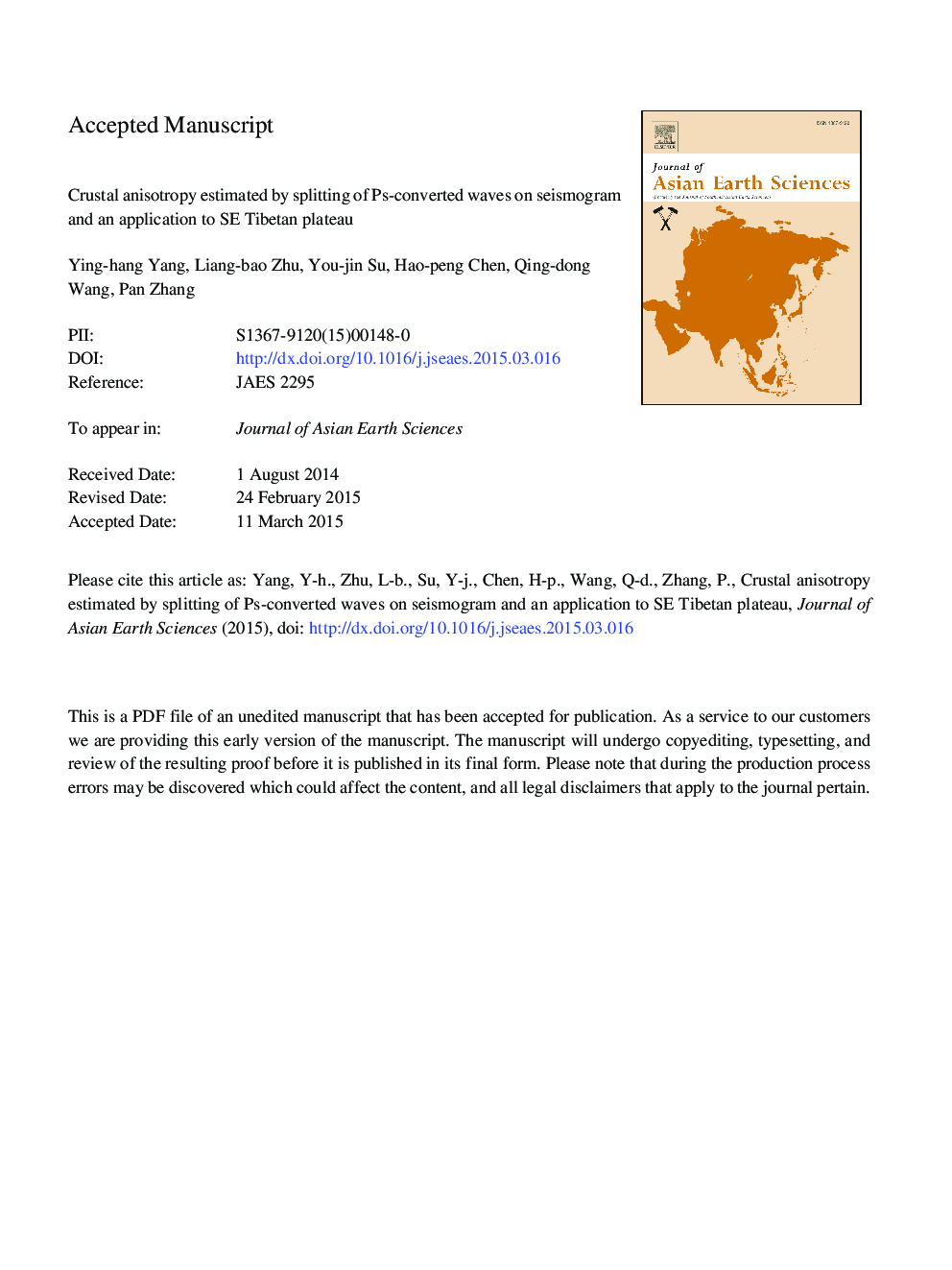| Article ID | Journal | Published Year | Pages | File Type |
|---|---|---|---|---|
| 6444284 | Journal of Asian Earth Sciences | 2015 | 53 Pages |
Abstract
The traditional method to study anisotropy of the crust is utilizing Ps-converted waves on receiver functions. We try to measure the splitting parameters of Ps converted waves on seismogram directly. Ps converted waves on teleseismic seismograms will be unclear due to the interference signals such as the tail of P waves, scattering waves and noises. However, interference signals and Ps converted waves have different polarization characteristics. Through theoretical and observational studies, we found that the minimum energy method is applicable to obtain the correct splitting parameters of Ps converted waves on seismograms and the time window is relatively easily chosen. We selected triennial teleseismic records, SNR greater than 7, from 51 seismic stations operated by Earthquake Administration of Yunnan Province, which located in southeastern Tibetan plateau and Sichuan-Yunnan area. We applied a narrow filter range, 0.2-0.6Â Hz, to minimize the interference of the tail of P waves, scattering waves and noises. Finally, we obtained 41 measurements from 51 seismic stations with the minimum energy method. Through the comparison with geodetic data, geophysical data and previous anisotropic studies, we conclude that the eastward extrusion of the Tibetan plateau affects the anisotropic property of the whole crust in southeastern Tibetan plateau and its surrounding areas.
Keywords
Related Topics
Physical Sciences and Engineering
Earth and Planetary Sciences
Geology
Authors
Ying-hang Yang, Liang-bao Zhu, You-jin Su, Hao-peng Chen, Qing-dong Wang, Pan Zhang,
